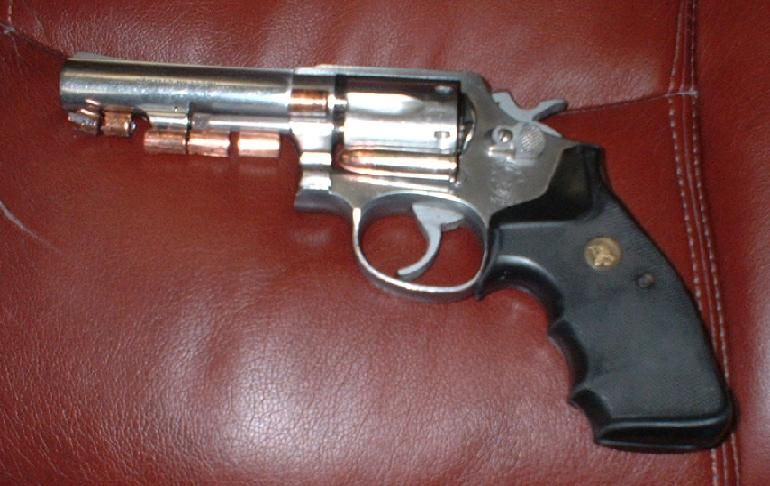It's good practice to talk safty and on this forum we often mention safe practices. Although I think it is time to have a discussion on loading safty.
First of all most all good loading manuals have a chapter on safty and that should not be overlooked.
I know that for me remembering can be the first safty check.
Safty Check: When loading check to have one powder on the bench. When loading particularly light loads or loads that fill less than half case volume double check visually that the powder is all the same with no haste. I have a old story on that subject. Way back when I first started loading for pistol. A friend was just starting to get into loading. I believe it was 357 Mag. He was disturbed in the middle of loading and when he returned he continued loading without double checking powder charges. Well he proudly gave me some loads to tryout. I went to the range and as I was shooting my pistol I noticed a different sound... I stopped with wonder. As I inspected the revolver I found the cylinder would not rotate. I had a bullet stuck between the cylinder and the barrel. There was no powder residue telling me It was the primer that launched the bullet. If it were a light powder charge I would of likely found the bullet in the barrel. Not a time to ignore the odd firing sound... I could of just as easily followed up with a hot load behind the jammed in the barrel.
Lets hear some thing from all of you out there. It would make a good safety talk.
First of all most all good loading manuals have a chapter on safty and that should not be overlooked.
I know that for me remembering can be the first safty check.
Safty Check: When loading check to have one powder on the bench. When loading particularly light loads or loads that fill less than half case volume double check visually that the powder is all the same with no haste. I have a old story on that subject. Way back when I first started loading for pistol. A friend was just starting to get into loading. I believe it was 357 Mag. He was disturbed in the middle of loading and when he returned he continued loading without double checking powder charges. Well he proudly gave me some loads to tryout. I went to the range and as I was shooting my pistol I noticed a different sound... I stopped with wonder. As I inspected the revolver I found the cylinder would not rotate. I had a bullet stuck between the cylinder and the barrel. There was no powder residue telling me It was the primer that launched the bullet. If it were a light powder charge I would of likely found the bullet in the barrel. Not a time to ignore the odd firing sound... I could of just as easily followed up with a hot load behind the jammed in the barrel.
Lets hear some thing from all of you out there. It would make a good safety talk.

